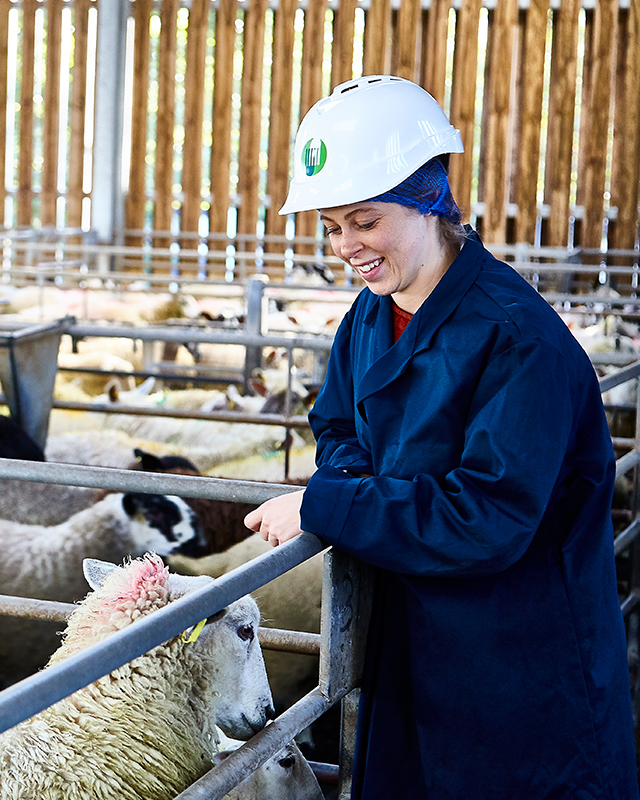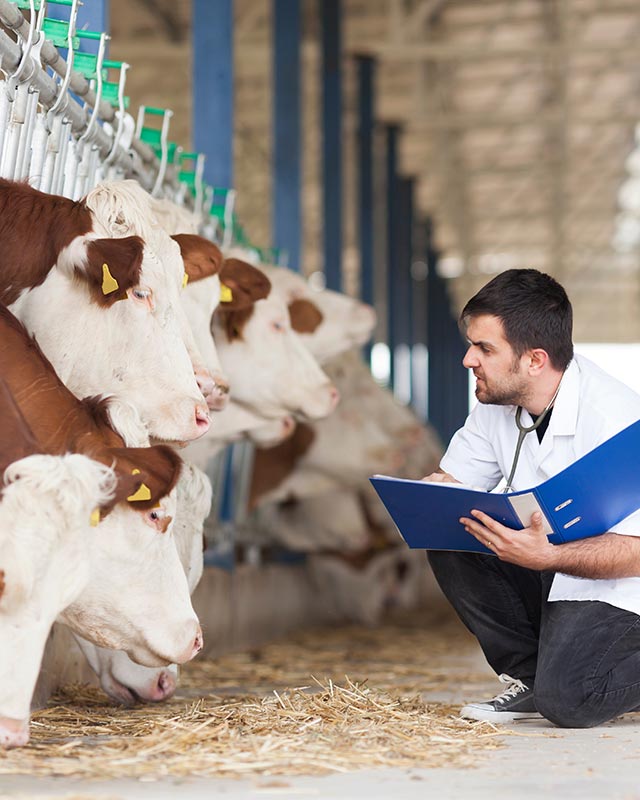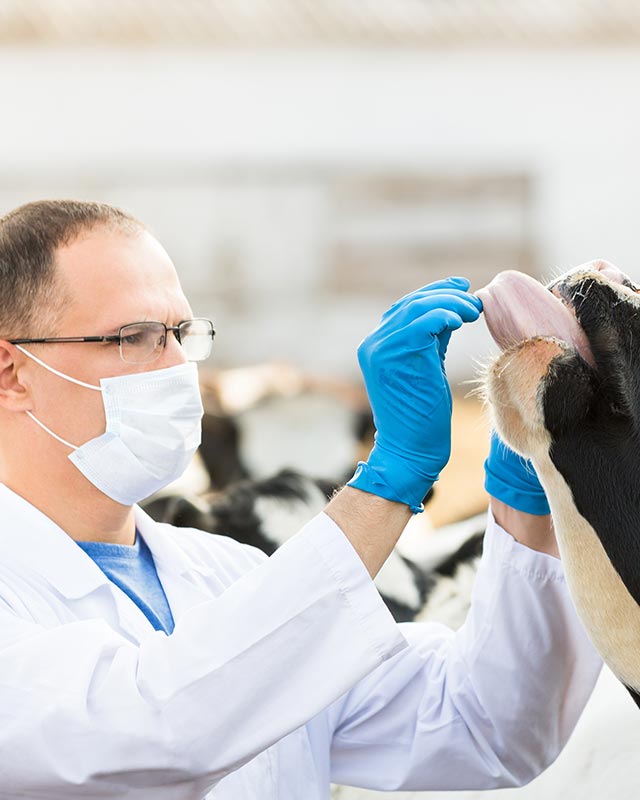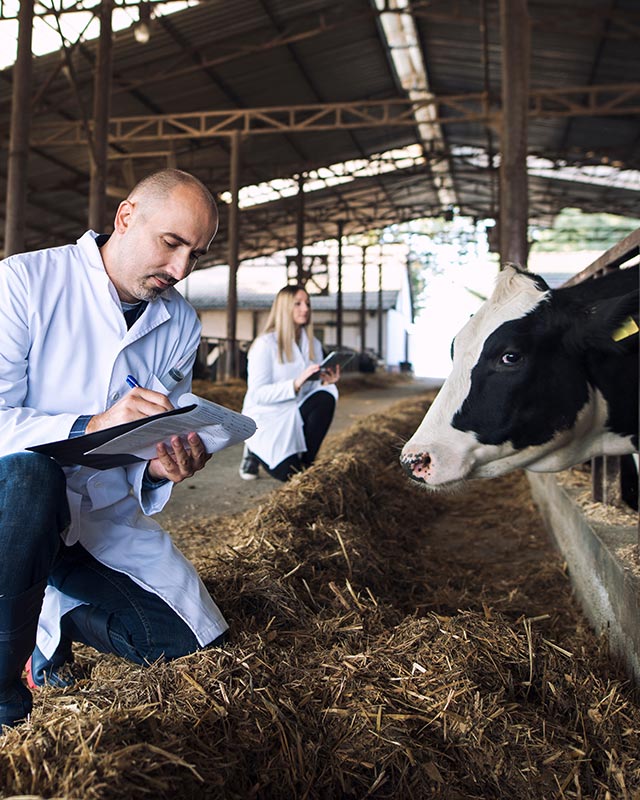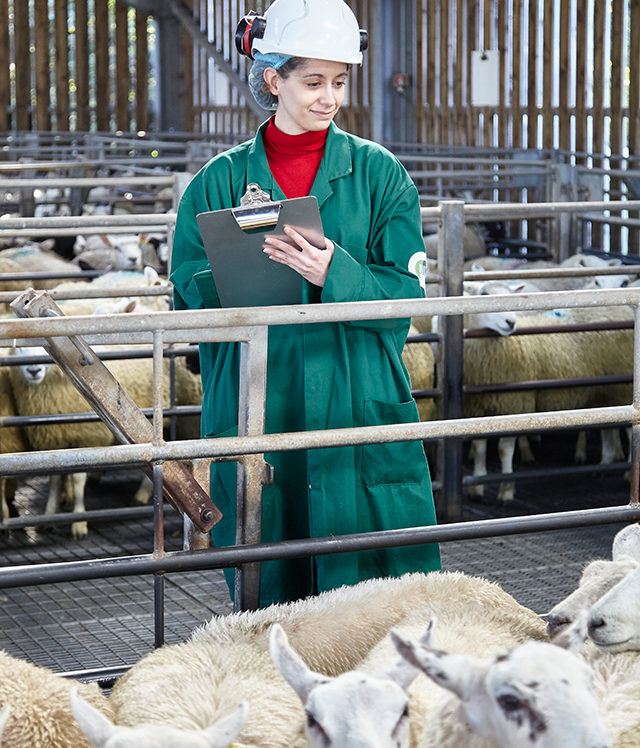On the 25th March 2025, significant legislative amendments were introduced affecting the majority of Export Health Certificates (EHCs) for products of animal origin (POAO) being exported to the EU. In this article, our National Technical Lead for Exports, Georgios Kakarantzas, outlines these changes.
Commission Implementing Regulation (EU) 2025/636 of 25 March 2025, published in the Official Journal of the European Union on 30 April 2025, introduces significant legislative amendments affecting the majority of Export Health Certificates EHCs for products of animal origin. These amendments also extend to the model private attestation for shelf-stable composite products.
This regulation will come into force on 20 May 2025. A transitional derogation allows for the continued use of the previous versions of the affected EHCs until 19 November 2025.
Key Amendments
- Trichinella Attestations in Porcine Meat-Related EHCs
(Model POR – 8370, Model MP-PREP – 8383, Model MPNT – 8384, and Model MPST– 8385)
The trichinella attestations in the EHCs for meat derived from domestic porcine animals (i.e., fresh meat – EHC 8370; meat preparations – EHC 8383; and meat products – EHCs 8384 and 8385) have been revised. The former mutually exclusive “either-or” format has been replaced with a more flexible inclusive “and/or” structure.
An excerpt from the revised EHC 8370 (Fresh Meat of Domestic Porcine Animals) illustrates the change:
II.1.3. the meat fulfils the requirements of Commission Implementing Regulation (EU) 2015/1375, and in particular:
(1) either [has been subjected to an examination by a digestion method for Trichinella with negative results;]
(1) and/or [has been subjected to a freezing treatment in accordance with Annex II to Implementing Regulation (EU) 2015/1375;]
(1) (9) and/or [is derived from domestic porcine animals coming from a holding or category of holdings that has been officially recognised as applying controlled housing conditions in accordance with Article 8 of Implementing Regulation (EU) 2015/1375;]
Upon release of the revised EHCs, consignments may include products derived from both Trichinella-tested animals and those originating from holdings with recognised controlled housing conditions. As such, they may be listed in the same Support Health Attestation (SHA) and certified under a single EHC.
This forthcoming amendment represents a significant and positive development. Once the revised EHCs are released, it will no longer be necessary for slaughterhouses to maintain separate systems for handling pigs/meat subject to Trichinella testing versus those originating from controlled housing conditions. This change is expected to reduce delays and mitigate the financial and logistical challenges currently associated with segregation.
- Composite Products EHC (Model COMP – 8350)
i) Inclusion of Processed Honey and Other Processed Apiculture Products
The Composite Product Export Health Certificate (EHC) has been amended to incorporate a new section specifically addressing processed honey and other processed apiculture products intended for human consumption. In the updated certificate, the certifying officer is now required to indicate both the listed/registered establishment(s) of origin and the country or countries of origin for these commodities.
The newly added section reads as follows:
and/or [II.3.F. Processed honey and other processed apiculture products intended for human consumption that originate from listed/registered establishment(s) No(s). ____________________________ _________________________________ (12) situated in the country(ies) ______________________________ ______________________ (16).]
While the introduction of this additional section may increase the administrative burden on exporters, manufacturers, and Official Veterinarians (OVs), it represents a constructive step toward harmonising the certification of honey as an ingredient in composite products. Until now, this area had remained unclear, with varying interpretations and requirements applied by different Border Control Posts (BCPs), resulting in inconsistency and uncertainty throughout the export process.
ii) Clarification of Exemptions for Certain Ingredients
Further amendments have also been made to clarify and align the composite certificate’s language with Article 5(2) of Commission Delegated Regulation (EU) 2022/2292. This provision specifies that gelatine, collagen, and wild-caught fishery products are exempt from the requirements outlined in Articles 6 to 12 of the same Regulation, which otherwise mandate that products of animal origin and composite products may enter the Union only from third countries that maintain a control plan for pharmacologically active substances, pesticides, and contaminants.
In the revised EHC, the existing paragraph II.2(d) is renumbered as II.2(e). It now includes a “Keep as appropriate” instruction, meaning that this paragraph can be deleted or struck through in the case of consignments containing only gelatine, collagen, or wild-caught fishery products, as indicated in footnote (17).
The relevant section is reproduced below:
(1) (17) [(e) fulfil the guarantees covering the concerned animals and products thereof, provided by the control plan submitted in accordance with Article 6(2) of Delegated Regulation (EU) 2022/2292, and the third country(ies) or region(s) thereof of the concerned animals’ and products’ origin is/are listed in Annex -I to Implementing Regulation (EU) 2021/405 for the concerned category(ies) of animals and products.]
Other Notable Amendments
- EHCs for transit
An alternative certification option has been incorporated into the animal health section of all model certificates for consignments that are not intended for placement on the EU market but are destined for third countries and authorised for transit through the Union, as set out in Part 1 of Annex XXII to Commission Implementing Regulation (EU) 2021/404.
An example of this addition (highlighted) can be found in the EHC for the export of fresh meat from bovine animals (8368 – model BOV):
II.2.1. has been obtained in
(1) either [the zone(s) with code(s) _____________________ (5) which, at the date of issue of this animal health/official certificate is/are authorised for the entry into the Union of fresh meat of bovine animals and is/are listed in Part 1 of Annex XIII to Commission Implementing Regulation (EU) 2021/404 and:]
(1) (6) or [the zone with code _____ (7) which, at the date of issue of this animal health/official certificate is authorised for the transit through the Union of fresh meat of bovine animals intended for a destination outside the Union and is listed in Part 1 of Annex XXII to Commission Implementing Regulation (EU) 2021/404, and:]
- Fresh Meat of Poultry – Export Health Certificate 8371 (Model POU)
In the export health certificate for fresh poultry meat (8371 – model POU), an alternative certification option has been introduced under point II.2.1(d) concerning infection with Newcastle disease virus. This applies to consignments originating from zones marked with an “N” in column 4 of the table in Part 1, Section B, of Annex XIV to Commission Implementing Regulation (EU) 2021/404.
The relevant section (highlighted below) now provides two certification options:
- either [(d) is considered free from infection with Newcastle disease virus in accordance with Article 39 of Delegated Regulation (EU) 2020/692;]
- or [(d) is not considered free from infection with Newcastle disease virus in accordance with Article 39 of Delegated Regulation (EU) 2020/692 and the fresh meat has been obtained from poultry originating from establishments located in an area within that zone which is not subject to official restrictions due to an outbreak of that disease;]
It is important to note that although Great Britain is designated with an “N” in the aforementioned legislation, this certification option is not currently applicable, as there has been no outbreak of Newcastle disease in Great Britain since 2006.
A similar amendment has also been introduced in the EHC concerning the export of fresh meat of ratites (EHC 8377 – Model RAT).
- Meat Preparations (EHC 8383 – Model MP-PREP), Meat Products (EHC 8384 – Model MPNT & EHC 8385 – Model MPST)
The Export Health Certificates for Meat Preparations and Meat Products have been amended in accordance with the requirements of Commission Delegated Regulation (EU) 2025/637. These amendments serve to clarify the categories of establishments from which fresh meat/raw materials used in the production of meat preparations and certain meat products may be sourced. In addition to slaughterhouses, game handling establishments, and cutting plants, establishments producing minced meat, meat preparations, and mechanically separated meat have now also been included.
Specifically, in point II.1.5 of all the above-mentioned EHCs (as illustrated below using the Meat Preparations EHC as an example), the term “fresh meat” has been replaced with “raw materials”, and the following wording (highlighted) has been added:
II.1.5. they are in packaging with the affixed label(s) bearing an identification mark to the effect that the meat preparations been manufactured from raw materials exclusively obtained in slaughterhouses, game handling establishments cutting plants, and establishments producing minced meat, meat preparations and mechanically separated meat, approved for the entry into the Union;
- Honey and Other Apiculture Products (EHC 8391 – Model HON)
The Export Health Certificate (EHC) for honey and other apiculture products has been amended to align with the provisions of Commission Delegated Regulation (EU) 2023/2652. This regulation stipulates that consignments of honey and other apiculture products intended for human consumption may enter the Union only if they are dispatched from, obtained in, and/or prepared at establishments listed by the EU.
As part of this amendment, the following text (highlighted) has been inserted into point II.(a):
(a) come(s) from establishments that have been registered and implement a programme based on the hazard analysis and critical control points (HACCP) principles in accordance with Article 5 of Regulation (EC) No 852/2004, regularly audited by the competent authority, and appearing on the list of establishments drawn up and kept up to date in accordance with Article 127(3), point (e)(ii), of Regulation (EU) 2017/625;
- Private Attestation for Shelf-Stable Composite Products (8352)
The model private attestation has been revised as follows:
- Point 3: The exemption relating to gelatine and collagen has been amended to apply exclusively to gelatine or collagen not derived from ruminant bones.
- Point 10: The reference to the origin of dairy products has been updated to align with the animal health requirements set out in Article 163 of Commission Delegated Regulation (EU) 2020/692.
- Antimicrobial Medicinal Products
The legislative references in the relevant section of the Export Health Certificates (EHCs) concerning the prohibition on the use of certain antimicrobial medicinal products have been updated. Specifically, the reference to the listing of a third country or region pursuant to Article 5(2) of Delegated Regulation (EU) 2023/905 has been replaced with the listing set out in the Annex to Commission Implementing Regulation (EU) 2024/2598.
It should be noted that this paragraph is not to be certified and must be struck through or removed until 3 September 2026.
- Fishery Products Caught by Vessels Flying the Flag of an EU Member State and Transferred in Third Countries, With or Without Storage (EHC 8362 – Model EU-FISH)
The two alternative options under point II.1(c) of this model certificate have been deleted. This revision is based on the following considerations:
Fishery products derived from wild catch are excluded from the scope of legislative provisions that require the country or region of origin to operate a control plan for pharmacologically active substances, pesticide residues, and contaminants. Given that these products are caught by vessels operating under the flag of a European Union Member State, the third country in which the transfer or storage takes place bears no responsibility for ensuring compliance with EU legislation concerning contaminants and pesticide residues.
- Gelatine Capsules
Commission Delegated Regulation (EU) 2025/637 of 29 January 2025, amending Commission Delegated Regulation (EU) 2022/2292, was published in the Official Journal of the European Union on 29 April 2025. Among other updates, it introduces a significant change concerning the import requirements for gelatine capsules.
Under the current framework, no official certificate is required for the entry into the Union of gelatine capsules classified under CN/HS codes 3913, 3926, or 9602, provided they are not derived from ruminant bones. Furthermore, composite products containing only such capsules as processed products of animal origin must be accompanied by a private attestation.
With the adoption of this amendment, no private attestation will be required for the entry into the Union of composite products that do not contain any processed product of animal origin other than gelatine capsules not derived from ruminant bones.
This legislative change will enter into force on 19 May 2025, i.e. the twentieth day following its publication in the Official Journal of the European Union.
Conclusion
These amendments represent a significant update to the EU’s export certification framework. Stakeholders are strongly encouraged to review the transition timeline and begin preparing for compliance well in advance of the mandatory enforcement date of 20 May 2025. The grace period will end on 19 November 2025.
It is important to note that, once the new Export Health Certificates are published in the EHC Online (EHCO) system by DEFRA/APHA, it will no longer be possible to apply for the previous versions. Use of the old version EHCs will only be possible if applications were submitted prior to the release date of the new certificates. At present, the publication timeline for the updated EHCs has not been confirmed by DEFRA/APHA.
Georgios Kakarantzas
Georgios is our National Technical Lead for Exports, overseeing national standards and legislative changes for export certification. He has worked at E&J for over 20 years, starting as an OV in 2003, before moving to specialise in exports.

